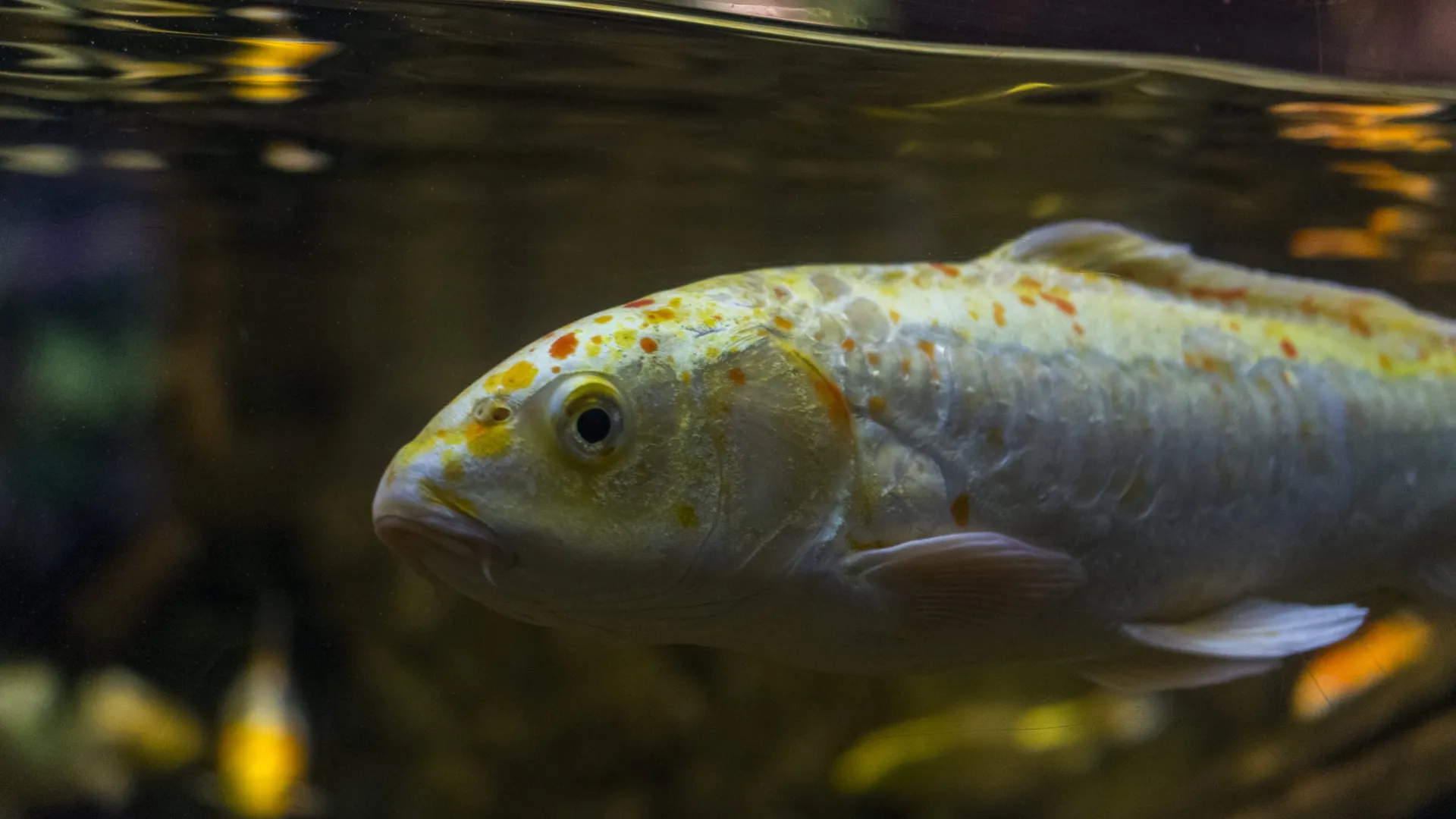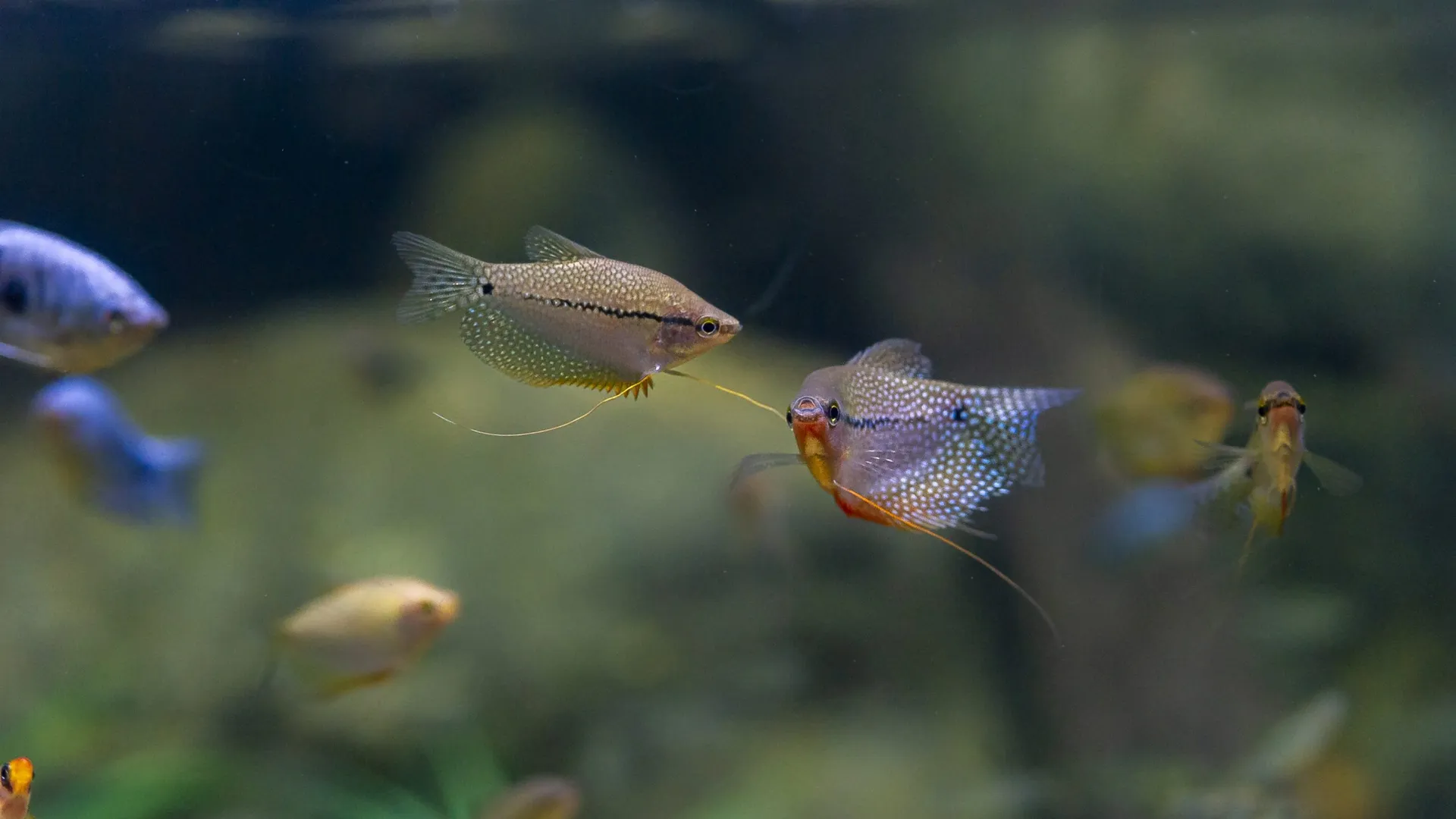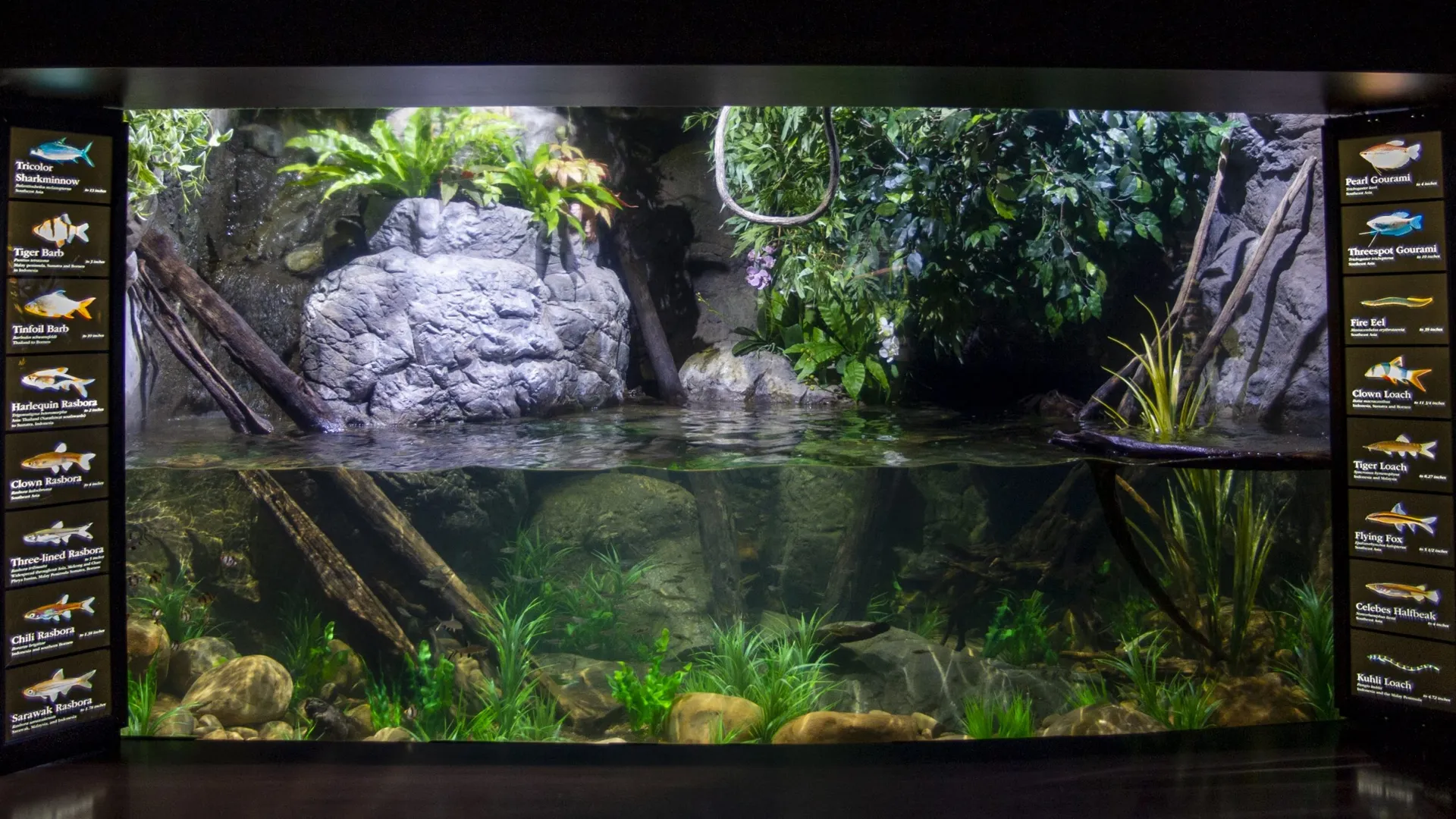[The following post was written by Aquarist II Kimberly Hurt, who oversees exhibits in the River Journey building’s Rivers of the World gallery.]
I took over management of exhibits in the Rivers of the World gallery in 2018. For several years before I began overseeing this part of the gallery, there had been murmurs of changing the theme of the Nishikigoi exhibit. The idea of showcasing brackish water species, including Archerfish and amphibious Mudskippers, had been floated around, but it never came to fruition.
While I settled into my new role, I didn’t immediately jump into suggesting a new theme to replace Nishikigoi, but in March of 2020, I was struck by an idea. I made up a presentation and offered it up to the Aquarium’s exhibit steering committee.
My idea was well-received — I heard only good things from the committee members — but then the Aquarium was forced to shut down due to the pandemic. Exhibit renovations were put on hold, and in the meantime, I even acquired more small Koi to fill the old exhibit. It seemed my vision was not going to come to be realized any time soon.
Fortunately, the holdup was surprisingly short. By the following February, I was given permission to go ahead and begin preparing to refresh the exhibit.



The Nishikigoi display had been in place since the Aquarium opened in 1992. Nishikigoi is the Japanese word for Koi, the colorful variety of Amur Carp prized by many as an ornamental fish. Appropriately, this exhibit was designed to mimic a pond featuring — naturally — Koi, Japanese Pond Turtles and, in the past, Mandarin Ducks.
Koi are interesting fish, and I believe most people have only seen them from a top-down view in ponds. The Nishikigoi exhibit was a way for people to get a better view of fish that they may have already been somewhat familiar with, but I believed we could make better use of that space.
At 2,200 gallons, Nishikigoi was reasonably sized, but by the time I began took over caring for it, it only showcased two species: the Koi and the turtles. For such a large exhibit, I thought we could display a greater diversity of fish that can be found in rivers around the world.
I worked in reverse on my idea. Instead of beginning with a specific region or river in mind, I looked through our reference material and chose fish I thought were interesting, beautiful and exciting. I then homed in on a place where all the fish I liked could be found together.
The list I chose included many tropical Asian fish, such as Rasboras, Barbs, Gouramis and Loaches. All of my favorites could be found in Indonesia on the island of Borneo or — more specifically — in the Kapuas River.
At more than 700 miles, the Kapuas River is the longest river in Indonesia, let alone Borneo. In my opinion, the most interesting characteristic of the Kapuas is the variety of landscapes and ecosystems it flows through.
The river begins within a high mountain range near the heart of Borneo. As it flows to the sea, the Kapuas changes from fast-moving mountain streams to deeper and slower-moving river channels. After widening into a system of interconnected lakes, it finally forms a marshy delta that spills out into the South China Sea. As the waters shift through this wide variety of environments, they provide habitat to nearly 300 different species of fish, each of which is able to find a place within the river that suits its needs best.
Now, guests can see some of these species for themselves in the Kapuas River exhibit, which opened in September. Unfortunately, I don’t have room to display all of the incredible biodiversity that can be found in Borneo, but I have picked 17 species of fish and two species of turtle to fill the exhibit.
Despite shifting our focus to a location more than 2,000 miles away, the exhibit needed surprisingly little work to be transformed from a Japanese pond to a life-rich Indonesian waterway. We didn’t do much to alter its bones other than to build some planters to host live plants native to Borneo and swap out background foliage for a fresher, more tropical look.
The biggest overall change has been to the level of activity guests now see. … This liveliness carries through to each level of the water column.



The biggest overall change has been to the level of activity guests now see.
Many of the fish I chose, such as the Glowlit Rasboras and Tiger Barbs, are schooling fish, so they swim about the tank in large numbers. This liveliness carries through to each level of the water column. Loaches dart between the rocks on the bottom of the tank, Gouramis bob at the surface of the water and the Malaysian Painted River Terrapins are much larger and more noticeable than the turtles in the Nishikigoi exhibit.
Personally, I think the shift to focusing on the Kapuas River offers a lot more visual interest to visitors. Helping to transform this exhibit is the first large project I’ve helped with in my career as an aquarist, and I’ve been so pleased to see how well it turned out.
The change from Nishikigoi to the Kapuas River has been refreshing. I feel strongly connected with the new exhibit since I personally handpicked all the species that we are displaying. I’m so excited for folks to be able to experience this exhibit, and hopefully have the same connection that I do with these new and exciting animals!
